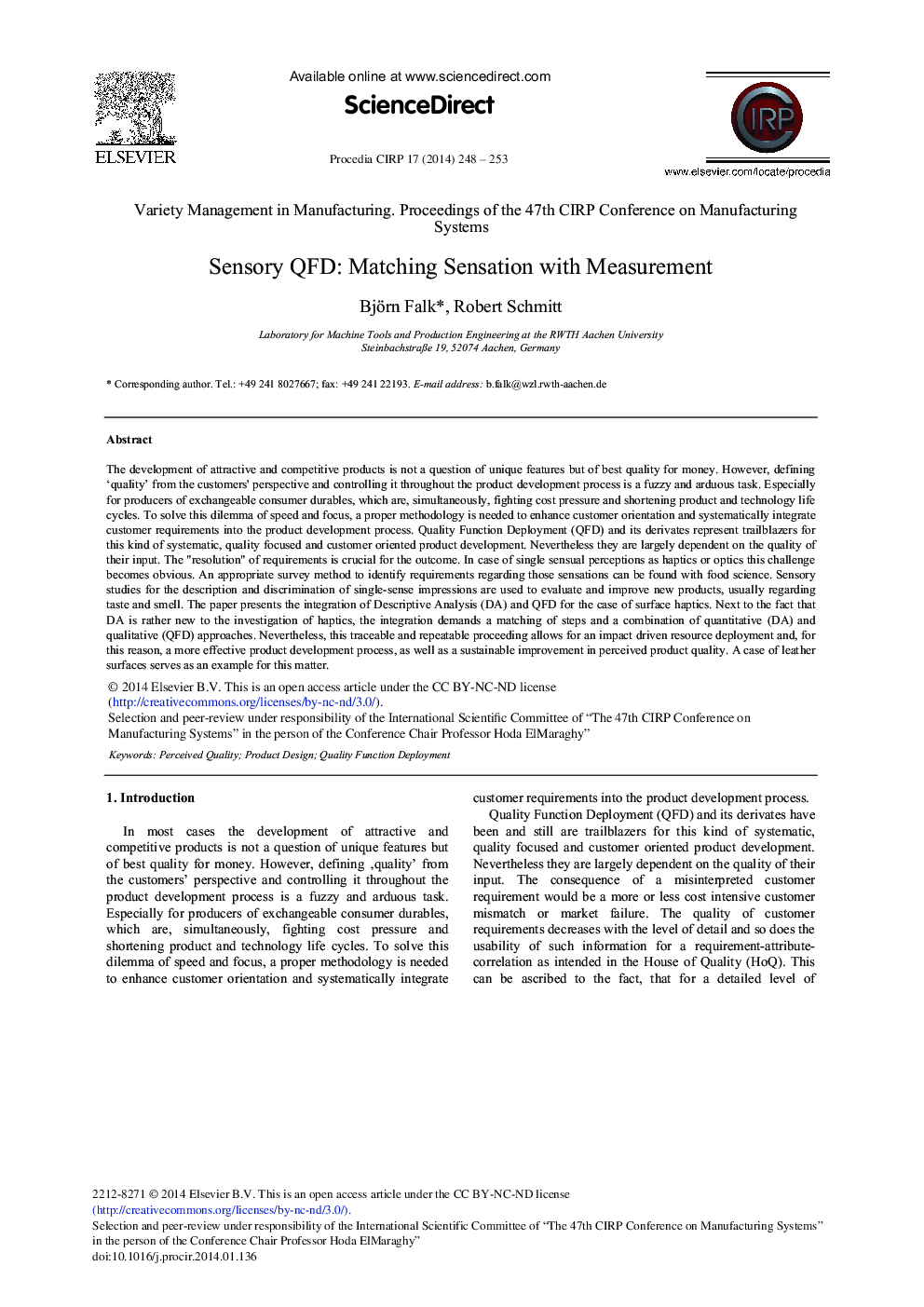| Article ID | Journal | Published Year | Pages | File Type |
|---|---|---|---|---|
| 1700381 | Procedia CIRP | 2014 | 6 Pages |
The development of attractive and competitive products is not a question of unique features but of best quality for money. However, defining ‘quality’ from the customers’ perspective and controlling it throughout the product development process is a fuzzy and arduous task. Especially for producers of exchangeable consumer durables, which are, simultaneously, fighting cost pressure and shortening product and technology life cycles. To solve this dilemma of speed and focus, a proper methodology is needed to enhance customer orientation and systematically integrate customer requirements into the product development process. Quality Function Deployment (QFD) and its derivates represent trailblazers for this kind of systematic, quality focused and customer oriented product development. Nevertheless they are largely dependent on the quality of their input. The “resolution” of requirements is crucial for the outcome. In case of single sensual perceptions as haptics or optics this challenge becomes obvious. An appropriate survey method to identify requirements regarding those sensations can be found with food science. Sensory studies for the description and discrimination of single-sense impressions are used to evaluate and improve new products, usually regarding taste and smell. The paper presents the integration of Descriptive Analysis (DA) and QFD for the case of surface haptics. Next to the fact that DA is rather new to the investigation of haptics, the integration demands a matching of steps and a combination of quantitative (DA) and qualitative (QFD) approaches. Nevertheless, this traceable and repeatable proceeding allows for an impact driven resource deployment and, for this reason, a more effective product development process, as well as a sustainable improvement in perceived product quality. A case of leather surfaces serves as an example for this matter.
